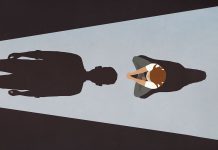For 23 years, every working day, Kevin Briggs went to work knowing that someone might try to end their life right in front of him. What can you say or do for a person standing on the edge of a bridge, ready to jump?
When the mythical Zeus grew angry with humanity, he sent Pandora a box from which all the world’s misfortunes escaped. In the end, the last thing remaining the box—fragile and faint—was hope. “What happens when you open the box and hope isn’t there?” These were the words used by Jason Garber to sum up his pain before he jumped from San Francisco’s Golden Gate Bridge, while Kevin Briggs watched, powerless to stop him.
For more than two decades, Kevin—a patrol officer—faced hundreds of such moments on the Golden Gate Bridge, a known suicide hotspot. The bridge is believed to have witnessed at least 1,600 suicides.
“What would you do if your family member, friend, or loved one was suicidal? What would you say?” Kevin often wrestled with these questions—questions made even more difficult in the early years when no psychological training was offered at his job.
In time, he came to one key conclusion: the most powerful thing he could do was listen. Truly listen. Listen in a way that makes the person feel seen and understood. “Don’t argue, don’t blame, or tell the person you know how they feel, because you probably don’t,” Kevin said during a TED Talk.
That approach helped him reach Kevin Berthia, a young man struggling with mental illness. When they met, Berthia was clinging to the edge of the bridge, balancing on a pipe—120 meters above the waters of San Francisco Bay. For an hour and a half, they talked about his depression and hopelessness. Then, Berthia decided he didn’t want to die. Later, when Kevin Briggs asked what made the difference between life and death, Berthia answered simply: “You listened. You let me speak, and you just listened.”
Not everyone was saved by a compassionate listener. But most of the people Kevin met on the bridge did not go through with suicide, he says—not because he did anything extraordinary, but because a connection was made. A bridge, of sorts, appeared—one that those who felt they’d burned every path behind them desperately needed to see.
Suicide can be prevented. What matters is that we open our eyes to the suffering of others and truly listen. And when we’ve found hope—not the fragile kind from Pandora’s mythological box, but the kind that transforms lives and souls, the kind that transcends our pain and disappointments—we need to share it. Because that kind of hope can save lives.




















